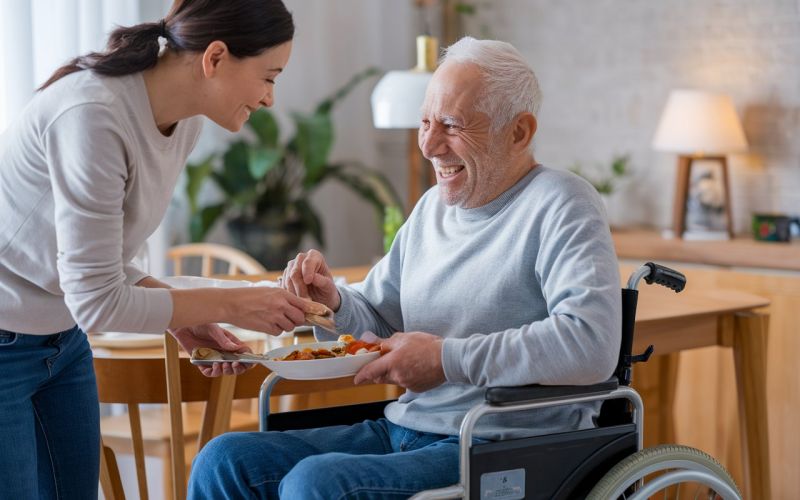Effective Communication Strategies for Engaging Elderly Patients with Dementia
iSavta | 28.01.2024

When it comes to caring for elderly patients with dementia, effective communication is crucial. Dementia is a progressive neurological disorder that affects memory, thinking, and communication abilities. Communicating with individuals who have dementia requires patience, understanding, and adapting to their unique needs. In this article, we will explore some strategies that healthcare professionals, caregivers, and family members can employ to effectively communicate with elderly patients living with dementia.
Establish a Calm and Supportive Environment
Creating a calm and supportive environment is essential for effective communication. Reduce background noise and distractions that may hinder the patient's ability to focus. Maintain a quiet and well-lit space, ensuring that the patient feels comfortable and secure. Sit at eye level with the patient, using gentle and relaxed body language to convey warmth and empathy.
Use Simple and Clear Language
When communicating with someone who has dementia, it is crucial to use simple and clear language. Avoid complex sentences or medical jargon that might confuse or overwhelm the patient. Speak slowly and clearly, using short sentences. Give them time to process information and respond. Break down instructions or questions into small, manageable steps, making it easier for them to understand and follow along.
Nonverbal Communication
Nonverbal cues can often convey emotions and intentions more effectively than words alone. Use facial expressions, gestures, and body language to enhance communication. Maintain eye contact, smile, and use gentle touches to show empathy and establish a connection. Nonverbal communication can help bridge the gap when words fail, providing comfort and reassurance to the patient.
Active Listening
Listening attentively is a fundamental aspect of effective communication. Encourage the patient to express their thoughts and feelings, and give them ample time to respond. Avoid interrupting or finishing their sentences. Be patient and understanding, even if their speech is fragmented or repetitive. Pay close attention to nonverbal cues and emotions, which can provide valuable insight into their needs and desires.
Use Visual Aids and Prompts
Visual aids and prompts can help facilitate communication with dementia patients. Use pictures, drawings, or written cues to supplement verbal instructions. Visual aids can assist in recalling important information or help patients express their needs and preferences. For instance, labeling drawers or cupboards with pictures can assist in finding necessary items and promote a sense of independence.
Maintain Routine and Familiarity
Establishing a consistent routine and maintaining familiarity can provide a sense of security for individuals with dementia. Consistency helps them feel more comfortable and less disoriented. Communicate upcoming activities or changes in their schedule in advance. Using a visual calendar or a daily planner can help reinforce routine and reduce anxiety associated with unfamiliar situations.
Be Patient and Practice Empathy
Patience and empathy are vital when communicating with elderly patients who have dementia. Understand that they may become frustrated or agitated due to their condition. Maintain a calm and composed demeanor, responding with kindness and understanding. Use positive reinforcement and gentle redirection if the conversation veers off-topic or becomes repetitive.
Adapt to Communication Changes
Dementia is a progressive condition, and communication abilities may change over time. Be prepared to adapt your communication strategies accordingly. As the disease progresses, individuals may have difficulty finding words or understanding complex instructions. Simplify your language further, using visual cues and gestures to supplement verbal communication.
Conclusion
Communicating effectively with elderly patients who have dementia requires a compassionate and adaptable approach. By creating a supportive environment, using simple language, incorporating nonverbal cues, and practicing active listening, healthcare professionals, caregivers, and family members can foster meaningful connections with individuals living with dementia. Patience, empathy, and a willingness to adapt to changing communication needs are essential in providing the best possible care and support for these individuals, improving their overall quality of life.












